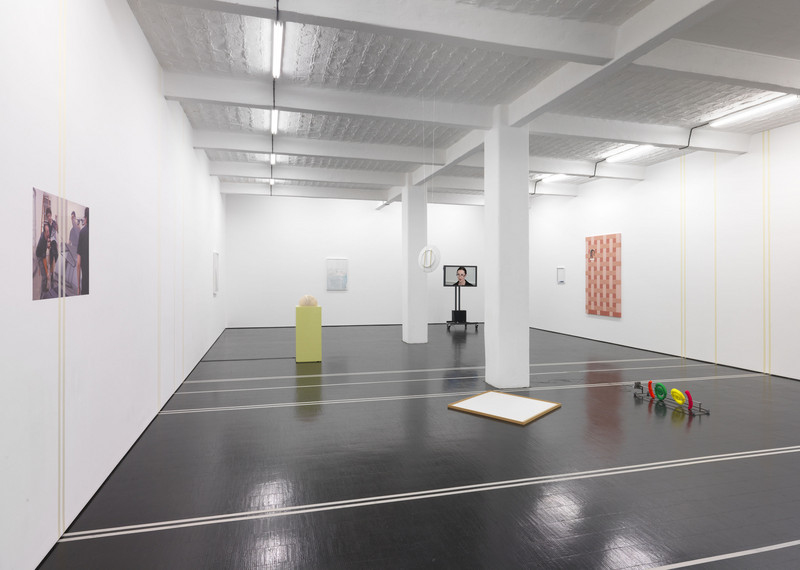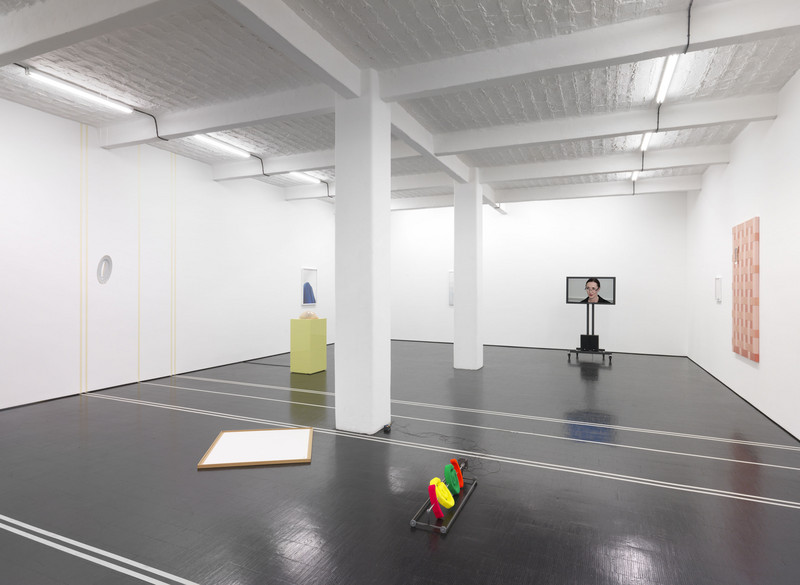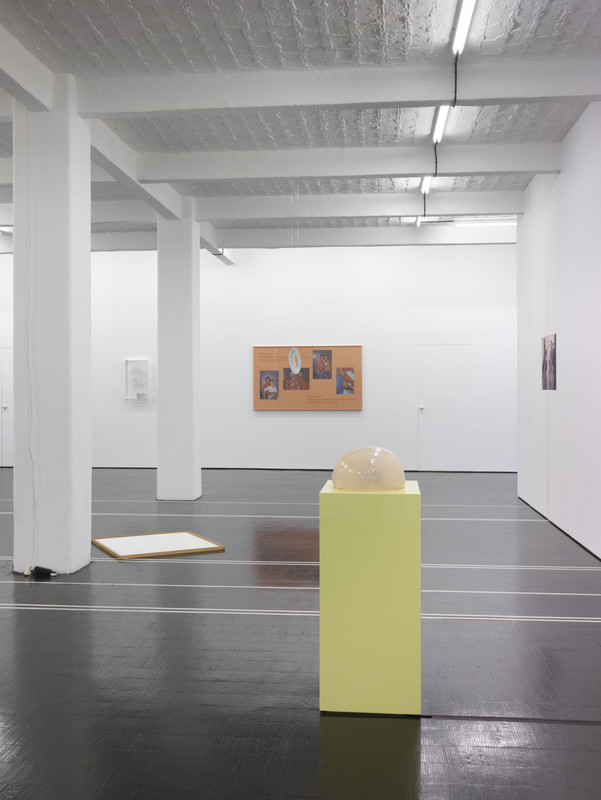No Games Inside the Labyrinth
02 Sep - 06 Dec 2014
Press Release
No Games Inside the Labyrinth
2 September – 31 October 2014
Opening Sat. 30 August, 6–9 pm
Gallery hours, Tue–Sat, 11 am – 6 pm
No Games Inside the Labyrinth features five artists based in New York, who for the most part have not previously been shown in Berlin. They include Antoine Catala, Melanie Gilligan, Matt Keegan, Josh Tonsfeldt, and Karin Schneider with Abraham Adams. Organized by John Miller, the show treats the gallery as a topological site in which the possibility of play might unfold; rather than requesting specific works, Miller asked the artists he invited to respond to each other and the works they present.
Antoine Catala’s kinetic sculpture, which represents an emoticon, literally enacts a topological exploration by awkwardly crawling over the floor. It is propelled by 3-D renditions of the characters that comprise an emoticon that represents googly eyes. These rotate on a steel stem driven by a small electric motor. As they rub against the floor, they push the entire contraption forward. The exact path of the sculpture is unpredictable. In this respect, it resembles a robotic vacuum cleaner – except that, for the emoticon, corners could pose an insurmountable challenge. In contrast, the prospect of concretization spins off in different directions. Catala describes them as “language devoid of language, like a skeleton of language created to communicate an emotion.” Does a pictogram make meaning more concrete? What happens when the symbols command real space, with seemingly their own agency? Catala’s second work is an inflatable logo, one that belongs to a set of logos for, as he put it, “every moment in one’s life,” i.e., getting an ice cream, taking a shower, and so on.
In Melanie Gilligan’s three-part video, Self Capital, economic factors appear as somatic symptoms in a middle-aged woman. As the narrative unfolds it becomes clear that, in a David-Lynch-like multiplication of personae, the same actor plays all the parts: both analyst and analysand, both customer and clerk, etc. Gilligan suggests that political economy operates both inside and outside the body, “As a patient in therapy, [the protagonist] represents both the capitalist system as a whole and a person affected by contemporary economic crisis all at once. The work follows Global Economy, a.k.a. the capitalist social body, as she progresses through a series of ‘unorthodox body-oriented techniques,’ suggesting that effects of the crisis such as job losses and governmental austerity measures are felt on a material and corporeal level, but also that worryingly contemporary psychological and political subjects are also increasingly reduced to and treated in terms of their bodily materiality today.”
Matt Keegan’s Father & Son extends the theme of doubling initiated by Gilligan, but in an oedipalized context. The images come from a costume make-up guide where, in this instance, the son appears to mimic his father. Both wear faded jeans and coral-colored t-shirts. The son’s fake moustache emulates his dad’s real version – as does his temporary tattoo. A text, appearing in German and English, complements these: “Father and son. Who is old and who is young? Two real sturdy guys. Mother’s choice will now be a difficult one.” Difficult indeed! The photograph in Keegan’s second work, Baby, is drawn from a collection of images used by his mother to teach English as a second language. One of the things he found curious about his mother’s flash cards is the ideological surplus embedded in such pictures. As such, they approach the didactic status of stock photographs minus their professional “streamlining.”
Josh Tonsfeldt will produce his work partly in situ, in response both to the gallery as a geographical site with a particular history and to the installation of other artists’ work. His approach will include gathering materials locally that he will incorporate or intermingle with his other photographs and sculpture. The images and materials will initiate a chain of associations, which in turn will help decide an improvisational process vis-à-vis a means of display. Tonsfeldt’s photographs split the difference between their physical composition and what they represent. His interventions are typically subtly poetic, yet point to the ideological function of the gallery as an institutional frame.
Karin Schneider & Abraham Adams’ work is envisioned in homage to Michael Asher, the recently deceased conceptual artist from Los Angeles. Reflecting Schneider’s dialog with Asher, elements of the work will include an Andy Warhol print, Barnett Newman's painting materials, a documentation of the dismantling of a Dan Graham pavilion at the Marion Goodman Gallery in New York, plus elements derived from John Knight's work. Schneider & Adams note that Graham and Knight were Asher’s peers and that their practice, like his, shifted the focus from “the work” to social architecture and frameworks, i.e., to distribution systems. In relation to this, the form of the homage is phantasmatic. Accordingly, as the artists write, “Affirming negation as one the ‘materialities,’ this spectral exercise will be arranged as fragmented elements displayed in the gallery’s interior, situating historical relationships and multiple signs of how they operate/control our thinking process... Specific works, derivatives, and documentation of these artistic productions will be on display, entangling their imbricated networks of social geometry and geometric praxis.” The conversation Homage to Michael Asher creates an environment for a photograph taken by John Miller. This photograph is available by mail only. The work can be sold with detailed instructions for its installation with the exception of the Warhol, which is not for sale. After this presentation the Warhol can be substituted by any Warhol under the condition that it always be displayed lying face-down on the floor.
– John Miller




